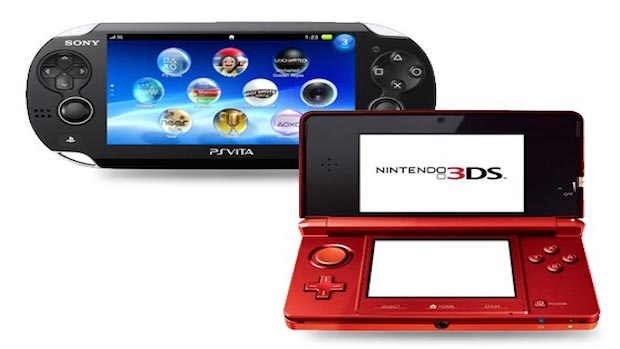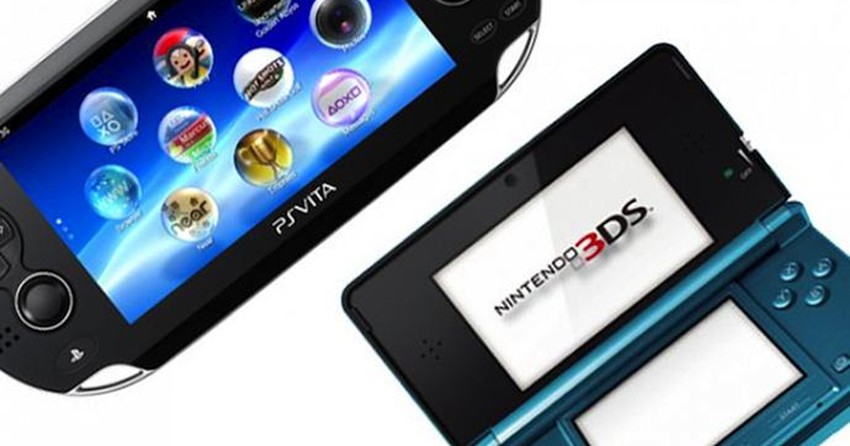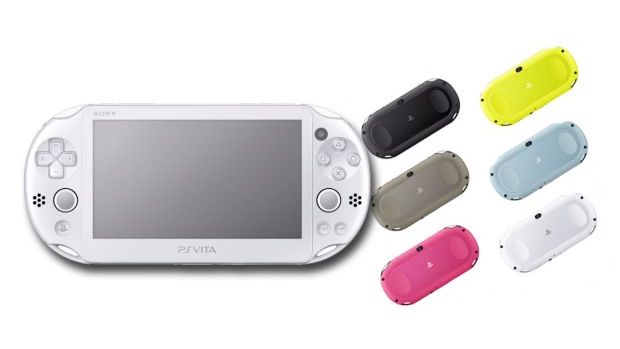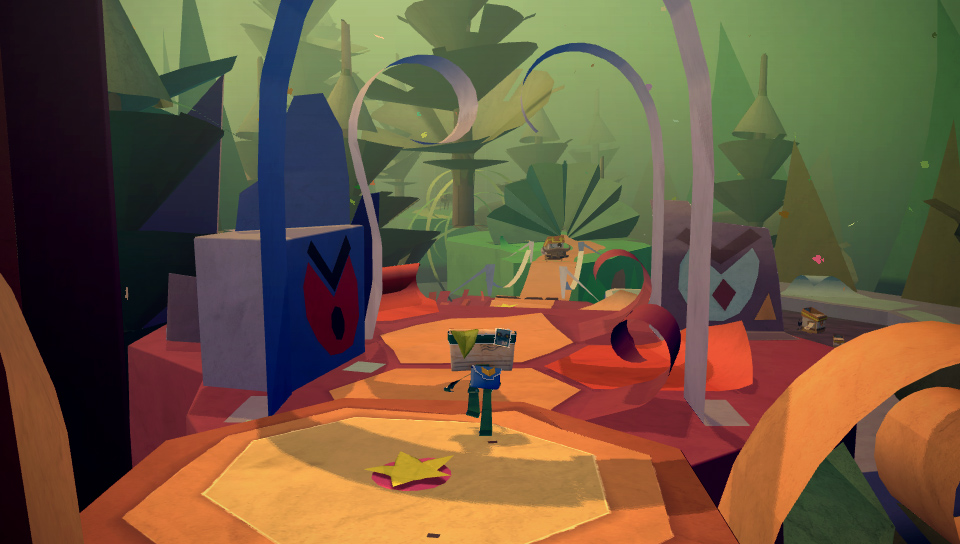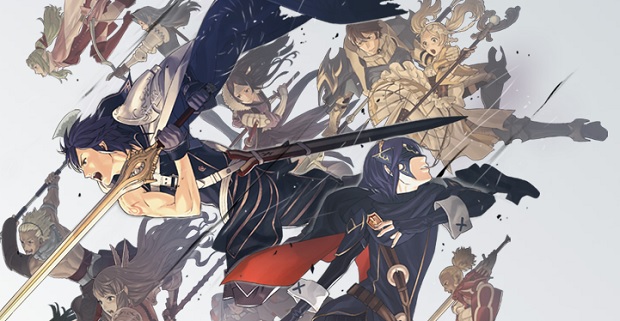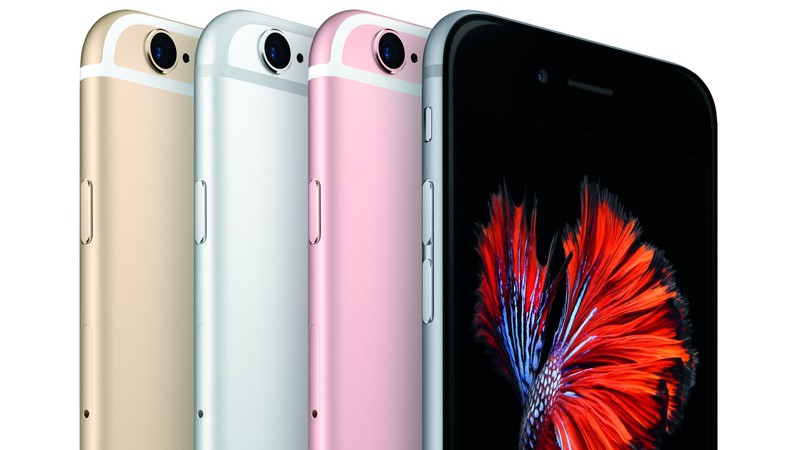
Back in 2011, the climate was charged- both Nintendo and Sony had announced their upcoming portable systems, and they both looked incredible. Nintendo’s 3DS handheld seemed to be a more core gamer focused evolution of their DS line, featuring high end graphics, more traditional controls, advanced networking features, and the ability to display stereoscopic 3D visuals without the need for glasses. Third parties were lining up and tripping over themselves to announce support for the 3DS- everyone wanted in on the successor to the 150 million+ selling Nintendo DS.
Then there was Sony with the PlayStation Vita (back then still just called the NGP). Featuring smart device capabilities, astonishingly high end graphics that approached early PS3 games, dual analog sticks, an embracing of modern handheld input methods such as touch screens and gryoscopes, and advanced networking features, the NGP looked like the greatest handheld system ever built- and when Sony announced that they would be pricing it for $250, the same price as Nintendo’s 3DS, it was clear that they were going for the kill. We were primed for a hell of a handheld war, even fiercer than the early days of the DS vs PSP, before the DS claimed absolute dominance, and the PSP receded into the background. This time around, the handheld market would clearly be a hard won one.
"When Sony announced that they would be pricing it for $250, the same price as Nintendo’s 3DS, it was clear that they were going for the kill. We were primed for a hell of a handheld war."
Four years later, the PlayStation Vita is dead, to the extent that Sony doesn’t even announce sales figures for it anymore (a recent estimate pegged it at 10.5 million units sold worldwide to date), all major support for the handheld having died out, and Sony themselves having publicly disavowed it. The Vita got no western third party support like the PSP did, and all but a highly niche lower mid end of the Japanese market fled the system too.
The 3DS, by comparison, seems to have done better at first glance- 52 million units sold worldwide, and a healthy library of some great games. But look closer, and the cracks start to appear. In spite of Nintendo’s great support for the 3DS, western support for the handheld was stillborn, and Japanese support for it is mostly sparing, as third parties have largely stuck with the PS3 as their target system. Indie development for the 3DS seems to never have taken off, thanks to the 3DS’s hobbled and dated architecture. Meanwhile, even on a sales front, the 3DS has been a constant disappointment- it has been the slowest selling Nintendo handheld ever, outpaced by the Gameboy Advance, outpaced by the Nintendo DS, outpaced by even the PSP. The 3DS has never met a single sales target that Nintendo set for it, and it seems set to end with lifetime sales just north of 60 million- a catastrophic collapse from the 154 million the DS sold.
Meanwhile, Nintendo seem to have given up on it entirely- no major new internally developed Nintendo 3DS title was announced at E3 this year, presumably because Nintendo is shifting all of its focus to the NX’s launch next year, and after announcing and releasing a highly capable New Nintendo 3DS, Nintendo seem to have forgotten all about it, with the only exclusive game for the system being a port of an old Wii game, rife with compromises. The 3DS is dead, and while it will probably have the chance to go out on a high next year, thanks to some long pending localizations such as Bravely Second and Fire Emblem Fates, it, too, is a far cry from what Nintendo intended.
Four years later, we have two dead handhelds, which sold a collective 63 million units worldwide. The handheld war we were all waiting for never happened- it was a limp, damp squib, a no show. From a high of 235 million handhelds sold last generation – almost as many handhelds sold as consoles, mind you – we’re down to just a quarter of that number. Handhelds today are dead, having long been overtaken by the smartdevices market. The very future of the segment seems to be in jeopardy.
The question is- what the hell happened?
"Four years later, we have two dead handhelds, which sold a collective 63 million units worldwide. The handheld war we were all waiting for never happened- it was a limp, damp squib, a no show."
It’s a good question- how did we get from the highs of last generation to wherever we are today? Were Sony and Nintendo really caught so much on the backfoot by the onslaught of tablets and smartphones? Does the world really not care for anything but the most shallow experience on a portable device any more? Or did Sony and Nintendo screw up somewhere along the line?
The answer here is, everything went wrong. That is not an exaggeration- this generation of handheld devices was launched in the perfect storm of every single possible factor working against it. Yes, there was momentum from the highly successful DS and PSP, but that had tapered off by 2011- when the 3DS and Vita launched in the first place.
The reason for the failure of the Nintendo 3DS and the PlayStation Vita was the introduction of smartphones and tablets, yes, but that was further exacerbated by Sony and Nintendo messing up every step along the way. This is important to remember- after all, the DS and PSP both co-existed with the iPhone and Android smartphones for five years, and they had some of their best years on the market then. The 3DS and Vita had no reason to do as poorly as they did, but Nintendo and Sony hobbled them entirely in a spectacular act of self sabotage.
Let’s start with the Vita, because that one’s far easier to work with. I don’t have to tell most people what went wrong with the Vita, because everyone already knows- Sony never gave a damn. The Vita was the perfect handheld, with a lot of power, scope for some very innovative games, developer friendly policies, and a great price. It was after it had been made, and when the time came to sell it, however, that Sony just left it for dead.
"The Vita was the perfect handheld, with a lot of power, scope for some very innovative games, developer friendly policies, and a great price. It was after it had been made, and when the time came to sell it, however, that Sony just left it for dead."
Consider, for example, that Sony enlisted no third party support for the PS Vita- evident in the fact that there was none for the handheld when it was announced, and when it was launched. Sony let a game as major and integral to their portable success as Monster Hunter jump ship to Nintendo, and it was all downhill from there. Third parties wouldn’t touch the system- none in the west, because they had been burned by the PSP, and most of them were downscaling their mobile ambitions to focus on smartphones and tablets, if anything at all, and almost none in Japan, because Sony let them all migrate to Nintendo.
This means that some of the biggest and best games on the PSP – Monster Hunter, Tactics Ogre, Final Fantasy, Metal Gear Solid, Kingdom Hearts, Grand Theft Auto, Burnout, Need for Speed – were all gone from the get go.
Consider, then, also, that Sony’s own first party efforts for the Vita were thoroughly lacking, and completely failed to build on the successes that they had had on the PSP. We did not get a new original Ratchet and Clank, we did not get a new Patapon, we did not get a new LocoRoco.
I can hear the objections to these arguments brewing already, so let me pre-empt you: Sony did try, you say. They got Assassin’s Creed and Call of Duty to be the headlining games for the Vita, after all- two of the biggest franchises on their handheld! How, then, can I say that they did not try with third parties? And what about games like Uncharted: Golden Abyss, Gravity Rush, Tearaway, Killzone Mercenary, or LittleBigPlanet Portable? How can I say they didn’t try with their first party efforts?
"While Sony did in fact get a new Assassin’s Creed and a new Call of Duty for the system, that was also really all they did- and in the process, Sony completely forgot to capitalize on Japanese third party development."
The answer is simple- while Sony did in fact get a new Assassin’s Creed and a new Call of Duty for the system, that was also really all they did- and in the process, Sony completely forgot to capitalize on Japanese third party development, which, I must remind you, was what the PSP had been best at by the end, thanks to the success of games like Kingdom Hearts Birth By Sleep, Monster Hunter Freedom 3, and Metal Gear Solid: Peace Walker. Those third parties were completely ignored in lieu of western third parties, who had long since determined that handheld game development was not for them, after their failure on the PSP. Sony failed to build on their own momentum, in a futile attempt to chase western third parties, and even there, they stopped after securing two token, throwaway and ultimately terrible games- an attempt to capitalize on the Vita-PS3 development ecosystem was never made.
Their first party initiatives were no better- just months after the launch of the Vita, Sony’s biggest first party studio, Naughty Dog, was seen publicly dismissing the Vita. In spite of this, on paper, Sony’s attempts seem impressive: a new Uncharted, a new Wipeout, a new ModNation Racers, a new Killzone, a new LittleBigPlanet, a new Resistance, as well as ports of Ratchet and Clank, Sly Cooper, and Jak and Daxter games, alongside some new IPs such as Gravity Rush, Soul Sacrifice, and Tearaway. What did they do wrong here, then?
The issue was almost all of those games were poor, being outsourced to low tier studios, which led to a bad stigma associated with games on the Vita overall- remember terrible, substandard games like Resistance: Burning Skies? Remember how bad the Vita ports for games like Sly 4 or Jak and Daxter Trilogy were? Remember how gimmickly games like Uncharted: Golden Abyss felt?
The further issue was that when Sony did have a good Vita game launching, they completely neglected to market it- how can anyone buy Tearaway, or Killzone Mercenary, or Gravity Rush, if they don’t even know that they exist?
"This lack of marketing of the system and its games betrayed an attitude of indifference on Sony’s part towards the Vita, which would continue to be exhibited for years after that."
Marketing was perhaps the biggest issue with the Vita- Sony completely neglected to market the system. The Vita launched in 2012 with next to no marketing, neither for it nor for its games, and it understandably tanked at retail- how would it not, when people didn’t know it was a thing, that it was out and available, that they could go and buy it? Why would any game release for the Vita spur any interest in the system, when Sony completely neglected to market said games?
This lack of marketing of the system and its games betrayed an attitude of indifference on Sony’s part towards the Vita, which would continue to be exhibited for years after that. The E3 right after the Vita launched, just four months after its launch, Sony spent more time discussing the Wonderbook than they spent on the Vita. Subsequent conferences would see them give barely a throwaway mention of the handheld, if that. The Vita would be reduced to montages, which wouldn’t even be shown off on stage- they would be shown at their booths. With such a total marketing disaster, when the Vita understandably did poorly, scaring off publishers and developers, and creating more bad publicity for the system, Sony was all too happy to burn bridges and distance themselves from the Vita entirely, pronouncing it dead in public multiple times, and completely ceasing all game development on it.
People often like to say that the biggest issue with the Vita was its overpriced proprietary Memory Cards, but the fact of the matter is, even if the Vita had had standard SD card compatibility, it would have failed- Sony ensured that it would right from the get go, and after being burned by Sony handhelds twice in a row, the mature, high end portable market demographic that Sony had aimed for with the PSP and PS Vita had had enough, and was convinced to move away from handhelds entirely.
Meanwhile, the 3DS was a mess from the start, although the issue there comes more from Nintendo’s complete lack of understanding that the market had changed, and their sustained refusal to respond to those changes, than it does to their game support or marketing. Nintendo launched the 3DS in a blaze of publicity in March 2011, and from the beginning, it failed to meet targets- the problem here was the price, which at $250, was too high for a dedicated handheld game device, especially considering the tech that was packed into the system. For what the 3DS was offering, it was priced unnecessarily high, and it was hard to justify it given that it launched with, well, no games, and its much hyped network functionality completely hobbled.
"For what the 3DS was offering, it was priced unnecessarily high, and it was hard to justify it given that it launched with, well, no games, and its much hyped network functionality completely hobbled."
To Nintendo’s credit, they moved to resolve issues swiftly- the 3DS price was slashed by $80 to just $169 in July, just four months after the system’s launch. Nintendo got their digital and network strategy in place right around this time, and fast tracked the release of some key games, such as Super Mario 3D Land and Mario Kart 7, as well. For a while, it seemed their gambit had worked, as 3DS sales took off. But they were not sustained sales, and in spite of Nintendo’s best efforts, including a killer 2013, which saw the release of games such as Etrian Odyssey IV, Monster Hunter 3, Animal Crossing New Leaf, Fire Emblem Awakening, Pokemon X and Y, Shin Megami Tensei IV, and The Legend of Zelda: A Link Between Worlds one after the other, the handheld was faltering at the market. What was the problem here?
The issue was that the 3DS had been designed for a pre-iPhone world. The kinds of games that had made the Gameboy and the DS so successful were now all available on smartphones and tablets for just $1, if that, making the prospect of $40 games on a $150+ handheld very unappealing to most. Why buy a 3DS for Tetris, when Angry Birds was free on your iPhone? Why spend $150, plus $40 on games, on a 3DS for kids, when they could just be handed older iPhones or iPads? Nintendo handhelds have always done best when they have targeted younger gamers, and more casual older gamers- the success of Gameboy and DS with games like Brain Age, Nintendogs, Pokemon, Tetris, and Touch Generations is a testament to that. Their more sophisticated, ‘hardcore’ games benefit from the massive install base boost that these more casual games bring, and sell loads. But the 3DS was singularly ill equipped to target this demographic, what with its pricing, but more importantly, the kind of games it was getting.
Nintendo had been caught wrong footed- they had no digital strategy to respond. The 3DS has robust network functionality, but the system has an obtuse, proprietary architecture, meaning that the iPhone and iPad, and even the Vita, were far more appealing to the makers of the kinds of smaller, handheld oriented experiences that had characterized Nintendo handhelds. Indie support for the 3DS was a non starter, since it was far too difficult to get these games working on the 3DS, after they had originally been designed for iPhones- which, remember, was catering to hundreds of millions of people compared to the 3DS.
In this context, Nintendo threw everything they had at the 3DS- a full fledged Kirby, a full fledged Donkey Kong, a full fledged Mario Kart, a full fledged Smash Bros., a full fledged Zelda, a full fledged Fire Emblem, a full fledged Star Fox, a full fledged Super Mario, a full fledged Animal Crossing, a full fledged Xenoblade… games that were so competent and great, that the 3DS became, essentially, everybody’s primary Nintendo system this generation. This is important- the 3DS sold as much as it did because it was fulfilling the role of a Nintendo console. People could spend just $150 to have the full fledged Nintendo experience- everything from Mario and Zelda to Super Smash Bros. to Fire Emblem was on this thing, and the games were all as good as anything ever done on Nintendo’s consoles.
"This is important- the 3DS sold as much as it did because it was fulfilling the role of a Nintendo console. People could spend just $150 to have the full fledged Nintendo experience."
This was further reinforced by the fact that the third party games the 3DS did get, from Monster Hunter to Shin Megami Tensei, from Bravely Default to Street Fighter, from Kingdom Hearts to Metal Gear Solid, were all pretty console like too. The 3DS sold as a primary Nintendo system, and in that light, its numbers become far more reasonable- its 50 million units sold right in the ballpark that Nintendo systems such as NES, SNES, and N64 sold.
The 3DS was so good at being a primary Nintendo system, it completely cannibalized the Wii U in the process. But Nintendo systems have a cap, and the 3DS hit that soon enough, after which its sales began to falter too. Understanding that the future of Nintendo lay not in its architecture, but in something else, and in the face of dropping sales and dropping third party support, Nintendo slowed development for the 3DS down. Today, it has been months since it got its last major release. It has been forever since its Virtual Console was updated. It has been months since it got its last major firmware update.
The 3DS, then, was a victim of being a system made for the pre-iPhone world. The mobile gaming market has changed dramatically, and the 3DS was ill equipped to deal with it. It managed to sell regardless, but that came more from it becoming everybody’s Nintendo system of choice than anything else. Today, it’s pretty much dead, having reached its ceiling almost a year ago, its sales having faltered after a short boost that the launch of the New 3DS brought it earlier this year.
So that was that, then- the 3DS and Vita both failed, as a result of a changing market, and Nintendo and Sony’s inability to respond to changing conditions. Today, the very existence of handhelds is in jeopardy, as Sony moves on from handhelds entirely, and even Nintendo announces its first mobile games.
"The 3DS and Vita both failed, as a result of a changing market, and Nintendo and Sony’s inability to respond to changing conditions."
The question now is, are handhelds dead, then?
They might well be- obviously, it is hard to tell how things will go. But I suspect that they are not, that they won’t be. Next year, Nintendo launches the NX, which will be a home console, and also a handheld. I suspect that the NX, made in a post smartphone world, and with all of the failures of the 3DS firmly in mind, will be equipped to handle the new market better. The issue with the 3DS and Vita was that the Vita was a device which could and should have succeeded in the post smartphone world, but its platform holder didn’t care enough to even try; the 3DS was an outdated device, but its platform holder gave it everything they had. A device like the Vita in the hands of Nintendo might have had a very different kind of life.
Which is why all indications of just what the NX is – a highly networked, digital device, with developer friendly architecture, and a unified ecosystem – are so encouraging. The handheld market may yet die, but as of right now, it seems as though the launch of the NX will be its last stand. And if Nintendo gets it right this time, who knows, they may even prove that handhelds still have a place in the gaming market.
The views expressed in this article are those of the author and do not necessarily represent the views of, and should not be attributed to, GamingBolt as an organization.








